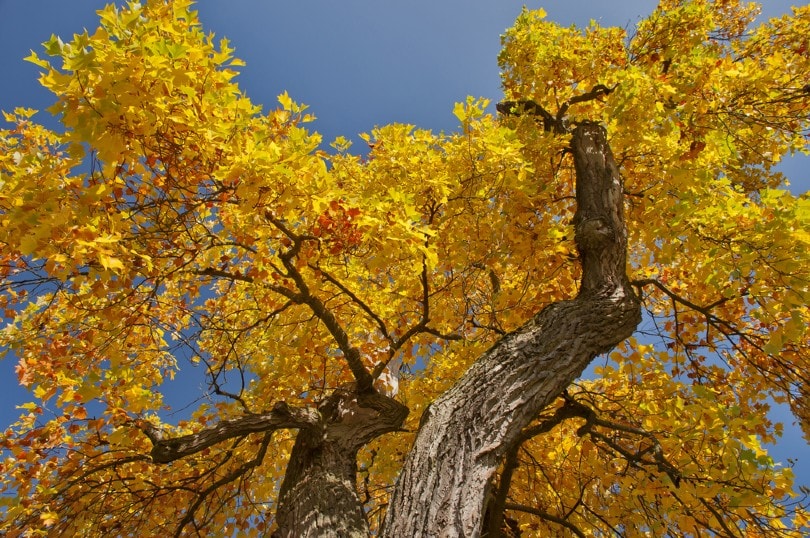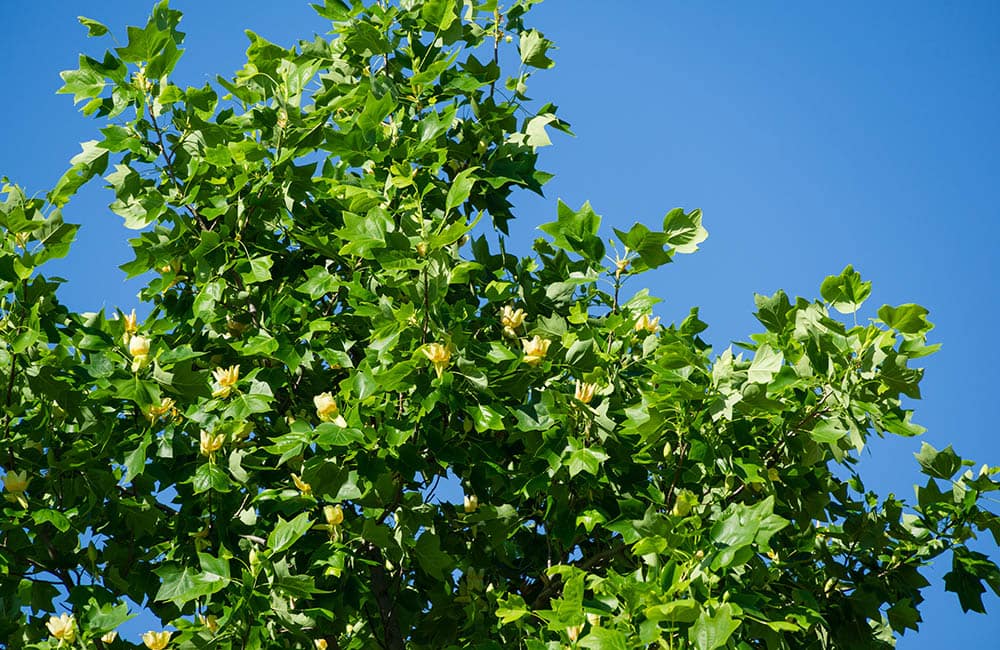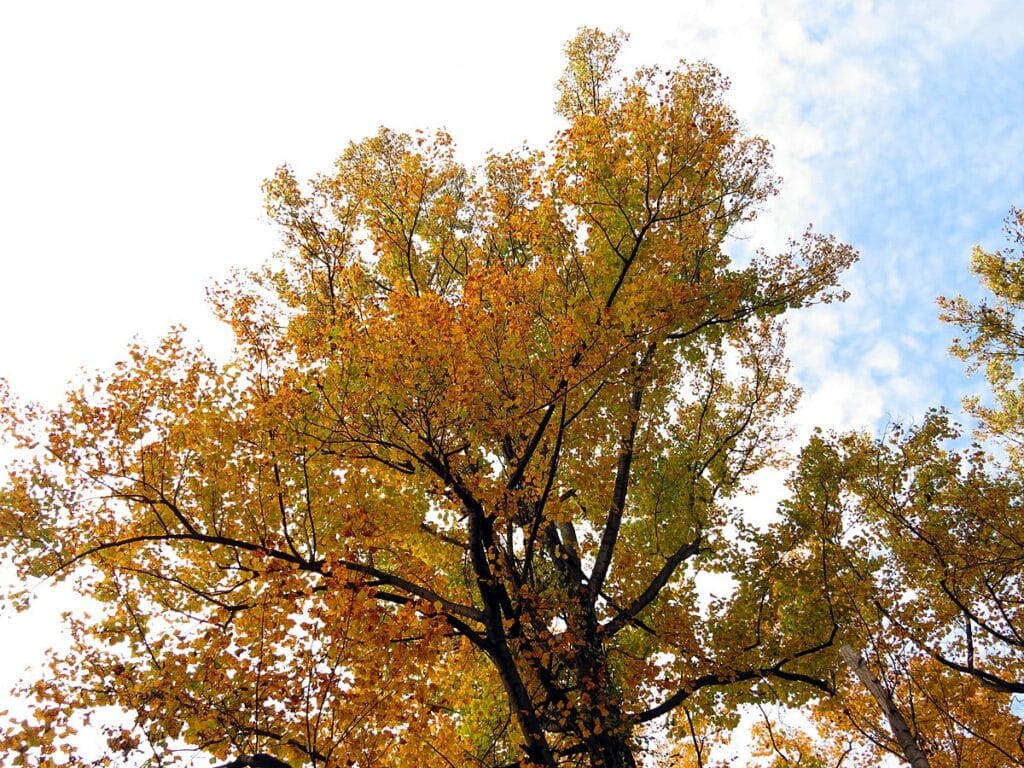What Is the State Tree of Indiana? History, Uses, & Characteristics
-
Pete Ortiz
- Last updated:

Like other states in the United States with state tree symbols, Indiana has one-the Tulip Tree. It’s also known as Tulip Poplar or Yellow Poplar. Its scientific name is Liriodendron tulipifera.
The tulip tree is a fast-growing deciduous hardwood native to North America. It was chosen as the official state tree of Indiana because it symbolizes strength, resilience, and beauty. It’s sometimes called “the king of the forest.” Besides Indiana, the tulip poplar is the state tree of Kentucky and Tennessee.
These large and leafy trees grow in forests throughout the Hoosier State. They have a rich green color, making them popular with homeowners who want shade. The tree also has many uses.
So, who doesn’t want to read more about the tulip tree and how it was decided as Indiana’s state tree? As it turns out, it’s more interesting than you might think, which is why you must keep reading!
Origin of the Tulip Tree
The tulip tree is named after its distinctive flower buds that resemble tulips. The genus name Liriodendron comes from two Greek words meaning “lily-tree.” It’s because of the resemblance of its flowers’ petals to the shape of lily pads. The word “dendron” means “tree.”
Although the tulip tree is also known as tulip poplar, it’s a member of the magnolia family. The tree originated in southern New England, Florida, Michigan, and Louisiana. It’s also native to the south-eastern and mid-western USA.
It’s among the largest trees in Eastern North America. The tree was introduced to the United States by English settlers in the early 1700s. These days, you can find it growing in the wild. It’s the most abundant tree in the Appalachian Mountains. Also, it’s planted along roadsides or in parks and gardens.

How Was the State Tree of Indiana Decided?
Being native to Indiana, the tulip tree impacted the state’s development and settlement significantly. Its wood helped make several items. Many Indiana residents preferred using it when building log cabins and dugout canoes years ago, hence its name, the canoe tree.
That’s why the Indiana State Legislature designated it as the official state tree in 1931.
Tulip trees grow well in Indiana. The soils in this state are suited to the growth of tulip trees. You can find the trees in each state east of the Mississippi River.
 Characteristics of the Tulip Tree
Characteristics of the Tulip Tree
The tulip tree is the most common native tree in eastern North America. It has a distinctive appearance that makes it easy to identify. It sheds its leaves due to weather changes. That’s why it’s a deciduous tree.
Here are several characteristics that make it stand out.
1. Leaves
The leaves are alternate and simple, with a long wedge-shaped base. The upper surface is dark green and smooth. On the flip side, the lower surface is light green and hairy.
The leaf stalk (petiole) is short, stout, and grooved on top. The leaf blade is elliptical, egg-shaped, or oblong. It has a broad base, tapering to a point at the tip. It has entire margins (no teeth) and pointed tips.
The leaves are large, up to 12 cm long. They may have four to six lobes or fissures on each side near their bases. During fall, their color changes to yellow.
2. Size
Tulip trees can grow up to 100 feet tall (30 to 35 meters). Their trunk measures up to 6 feet (1.8 meters) in diameter. It takes 15 years to mature fully, though they continue to grow in height throughout their lifespan.
Some tulip trees can live as long as 300 years or more when planted in good soil with plenty of sunlight and nutrients. You can add fertilizer regularly each year after planting them in your yard.
3. Bark
The tulip poplar has a smooth bark when young. Also, it’s striped with faint fissures that give it an attractive appearance. The bark also has a gray-green color, and it becomes darker as it ages. Eventually, it turns grayish brown or reddish brown. Then, it peels away in strips like mittens on your hands! It also develops a uniform color and longitudinal ridges that intersect each other.

4. Twigs
The tulip tree produces long, thin, brittle, and shiny twigs. They grow from the trunk and spread out over time, creating an interesting effect on a lawn or garden. The twigs are also covered with small dots that give them an interesting texture.
5. Buds
The most noticeable characteristic of the tulip tree is its unique buds. The buds at the tips of young twigs are reddish brown and covered with hairs that look like scales or warts. The red buds have two scales and they look like a duck bill because they’re flat.
As they mature, these buds turn greenish yellow. Then, they turn brown as they open to release the pollen-bearing male flowers. The buds emerge before the leaves. So, if you see a cluster of these buds on a branch, you can be sure there’ll be new leaves soon.
6. Flowers
The tulip tree is known for its showy spring flowers. They appear before the leaves between May and June. The flowers are large and solitary on the ends of branches or at their base. They grow up to two inches wide and three inches long.
The petals are yellow or red-orange with a ruffled edge. It gives them a tulip-like appearance. The flowers also have a vibrant yellow color during fall. They have many petals surrounded by many male parts.
7. Fruits
Tulip trees produce fruit that resembles small nuts in appearance and size. Each nut contains one seed inside it. It hangs from a long stem attached to the branch where it grew until it ripens during fall. Then, it drops onto the ground, where it will germinate within several weeks.
Individual fruits are known as samaras. They’re about 1.75 to 3 inches (4.5 to 8 cm) long. Usually, samaras ripen during fall. Then, they fall to the ground.
Uses of the Tulip Tree
Traditional Medicinal Uses
Native Americans used the tulip tree for its medicinal purposes. The bark was boiled in water to make tea. It could be used as an eye wash or applied directly to wounds as an antiseptic dressing. The medicinal tea also treats malaria and typhoid. The inner bark was helpful when treating arthritis and rheumatism.
The leaves were also boiled in water to make tea. It could be drunk or used as an eyewash or mouth rinse to relieve sore throats and gum pain.
Tulip flowers prepared a balm to treat burns and soothed the skin.

Present-Day Medicinal Uses
The bark of the tulip tree contains tannins. You can use them to make a tea that helps with diarrhea and dysentery. It can also treat other digestive problems such as constipation or stomach ulcers. This tea can also help relieve joint pain caused by rheumatism or arthritis. Take it for several weeks at a time in small doses each day.
Making Furniture
The tulip tree is a beautiful tree you can use to make furniture. It is one of the most popular trees used by woodworkers because of its beautiful grain and ability to withstand wear and tear. The wood from this tree is strong, durable, and resistant to decay. It’s also easy to work with, stain, or paint. It has been used in making furniture for centuries, especially in Europe.
Culinary Uses
The tulip tree has been used for food by Native Americans for centuries. The inner bark was eaten raw or dried and ground into flour for making loaves of bread or patties.
The leaves could be eaten raw or boiled as greens. They are still enjoyed today as an ingredient in salads. The flowers can be eaten raw or cooked in syrup as a dessert treat.
Conclusion
The process for making a state’s official tree is a bit complicated. But the crucial thing to remember is that people have a connection with nature. With that, no other tree compares to the Hoosier State’s champion, the official state tree of Indiana.
We hope you enjoyed this and have learned something about the history of Indiana’s state tree. Next time you’re outdoors and see a stately tulip tree, know that it holds a crucial place in the history and culture of this great state.
Featured Image Credit: Matt Ledwinka, Shutterstock
Contents


